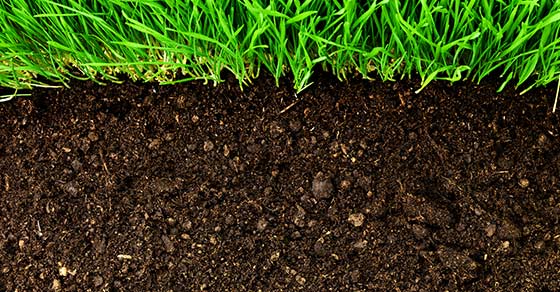Biochar, a charcoal-like, carbon-based material with roots in ancient civilizations, has scientists excited over the potential it holds for restoring depleted soils, improving food security, and aiding in climate change efforts when used as a soil amendment.
What is Biochar?
Biochar is created through the thermal treatment of biomass in a high temperature, indirect-fired rotary kiln, a process referred to as pyrolysis, sometimes also called torrefaction, though torrefaction tends to refer specifically to the pyrolysis of wood biomass.
Biochar can be created from any form of biomass – animal by-products, agricultural waste, forest product residuals, and more. The source material, as well as the variables of the pyrolysis process, will impact the characteristics of the end product.
The concept of biochar originates from ancient Amazonian civilizations thousands of years ago, where charcoal was placed in the soil, combined with cooking debris, creating terra preta soils – dark, nutrient rich and highly fertile soils still utilized today.¹
Benefits of Biochar as a Soil Amendment
Biochar boasts a porous surface structure and chemical properties that allow it to capture and hold minute particles. This ability lends itself to attracting and holding nutrients, moisture, and agrochemicals, as well as providing a place for micro-organisms and fungi to reside. Additionally, biochar is not as susceptible to degradation and breakdown, lasting longer in soil than other types of organic matter (terra preta soils have persisted for thousands of years), so its effects are long lasting.¹
According to the International Biochar Initiative, biochar can offer the following benefits to soil:
- Reduced nitrogen runoff
- Possible nitrous oxide emissions reduction
- Improved soil fertility through increased cation-exchange capacity
- Moderation of soil acidity
- Better water retention
- Increased number of beneficial soil microbes
Although biochars can differ and soils respond differently, biochar has shown to result in more fertile soil, increased crop yields, and improved crop nutrition, even in challenging areas with depleted soils, insufficient water, or limited access to organic resources or fertilizers.¹
While more research on the topic is needed, some speculate that as such a powerful catalyst in improving soil fertility, crop yield, and nutrition, biochar could also be a critical tool in meeting the world’s food security needs for an exponentially growing population.
In one growth trial, Diacarbon demonstrated an astounding 69% increase in tomato plant yield through the application of biochar.
Biochar Carbon Sequestration
Biochar is also being examined for its ability to sequester carbon in soils for long periods of time, which could be a key factor in reducing greenhouse gases.
As plants and other organic materials decompose, they naturally release the amount of carbon that was captured throughout their lifetime in the form of CO2 emissions. While the pyrolysis of biomass to create biochar also releases CO2 emissions, it generally only releases half the amount of carbon that would otherwise have been released through natural decomposition. During pyrolysis, the carbon remaining in the biochar is converted to a more stable form, allowing it to be “locked up” and stored in soil, though more research is needed to determine for how long.²
Because the production of biochar actually reduces the amount of CO2 emissions released into the atmosphere, it is considered a carbon negative activity. One study estimates that 12% of anthropogenic greenhouse gases could be reduced annually by using biochar to store carbon in soils. This would be a substantial win in the efforts against climate change.
Biochar Pyrolysis with a Rotary Kiln
One way to create biochar on a continuous basis is through the use of an indirect rotary kiln (sometimes referred to as a calciner), which allows the material to be exposed to high temperatures for a predetermined amount of time. This pyrolysis process happens between 500 – 800ºF, depending on the source material, and works to speed up the decomposition of the biomass, leaving behind the charcoal-like product.
Biomass is fed into the kiln, which is sealed off to create the oxygen-free environment. The kiln is enclosed in a furnace, which externally heats the drum rotating inside. As the drum rotates, the biomass moves through the slightly sloped drum, and is processed for the specified amount of time.
In addition to biochar, the biochar production process also yields by-products that can be utilized as well. Both syngas and bio-oils are produced and can be used as supplemental or alternative forms of energy for the process. The reaction heat can also be captured for use. In many cases, the syngas driven off from the biomass is adequate to provide all the energy needed for drying the raw material.
Conclusion
As a diverse material with many benefits, biochar continues to gain attention for the opportunity it holds in restoring degraded soils, improving food security, and reducing greenhouse gases, with experts predicting steady market growth to 2022.³
FEECO has been an expert in the thermal processing industry for over 65 years. We provide material testing and custom rotary kilns for the production of biochar. For more information, contact us today!
SOURCES:



